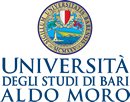TEACHER PERCEPTIONS ON IMPLEMENTING MOBILE AUGMENTED REALITY FOR THE TEACHING OF ITALIAN AS A FOREIGN LANGUAGE. A PILOT STUDY.
Abstract
Augmented Reality (AR) is an emergent technology that is revolutionizing the educational environment. Despite the plethora of advantages that AR has demonstrated in a number of disciplines, its implementation for foreign language education is still limited. Moreover, the majority of teachers are unfamiliar with this emergent technology and their role as AR designers and facilitators is still a critical factor. On the other hand, the most explored target languages are English and Chinese and although new languages are being investigated, the study of AR for the Teaching of Italian as a Foreign Language (TIFL) is limited. Therefore, the investigation aimed to highlight the perspective of educators when engaged in the process of designing and implementing Mobile AR (MAR) for the language classroom. In line with other researches, the pilot study showed that according to teachers’ perceptions, AR has the potential to enhance student motivation. However, initial findings highlighted the need of long-term, ongoing training for teachers and the necessity for open-source, code free, mobile AR platforms specifically designed for language educators. Becoming equipped with skills and tools to integrate AR in the language classroom, teachers can customize this emergent technology, avoiding the situation where AR learning design is mainly managed by information technologists, that ignore students’ needs and have a limited understanding of effective pedagogies.
Parole chiave
Full Text
PDFRiferimenti bibliografici
Azuma R., 1997, “A Survey of Augmented Reality”, in Teleoperators and Virtual Environments, 6, pp. 355-385.
Bagna C., 2011, “America Latina”, in Vedovelli Massimo (a cura di), Storia linguistica dell’emigrazione italiana nel mondo, Carocci Editore, pp. 305-357.
Bonner E., Reinders H., 2018, “Augmented and Virtual Reality in the Language Classroom: Practical Ideas”, in Teaching English with Technology, 18, pp. 33–53.
Braun V., Clarke V., 2021, Thematic Analysis, London, Sage Publications.
Cervi-Wilson T., Brick B., 2018, “ImparApp: Italian language learning with MIT’s TaleBlazer mobile app” in Rosell-Aguilar F., Beaven T., Fuertes Gutiérrez M., (a cura di), Innovative language teaching and learning at university: integrating informal learning into formal language education, Research-publishing.net, pp. 49-58.
Chen M.P., Wang L.C., Zou D., Lin S.Y., Xie H., Tsai C.C., 2020, “Effects of captions and English proficiency on learning effectiveness, motivation and attitude in augmented-reality-enhanced theme-based contextualized EFL learning”, in Computer Assisted Language Learning, 0, pp. 1–31.
Campbell D. T., 1963, “Social attitudes and other acquired behavioural dispositions”, in
Psychology: A study of a science, 6, pp. 94–172.
Campbell A. G., Santiago K., Hoo D., Mangina E., 2016, “Future mixed reality educational spaces”, in 2016 Future Technologies Conference, pp. 1088–1093.
Cipresso P., Giglioli I.A.C., Raya M.A., Riva G., 2018, “The past, present, and future of virtual and augmented reality research: A network and cluster analysis of the literature”, in Frontiers in Psychology, 9, pp. 1–20.
Davis F., 1989, “Perceived Usefulness, Perceived Ease of Use, and User Acceptance of Information Technology”, MIS Quarterly, 13, pp. 319-340
Diegmann P., Schmidt-kraepelin M., Eynden S., Basten D., 2015, “Benefits of Augmented Reality in Educational Environments. A Systematic Literature Review”, in Benefits, 3, pp. 1542–1556.
Ertmer P. A., Ottenbreit-Leftwich, A. T., Sadik, O., Sendurur E., Sendurur P., 2012, "Teacher beliefs and technology integration practices: A critical relationship", in Computers & Education, 59, pp. 423–435.
Escobar-Pérez J., Cuervo-Martínez A., 2008, “Validez de contenido y juicio de expertos: una aproximación a su utilización”, in Avances en Medición, 6, pp. 27-36.
Fazio R. H., 1990, “Multiple processes by which attitudes guide behavior: The MODE model as an integrative framework”, in Advances in experimental social psychology, 23, pp. 75–109.
Godwin-Jones R., 2017, “Smartphones and language learning”, in Language Learning & Technology, 21, pp. 3–17.
Hernández-Nieto R., 2011, Instrumentos de recolección de datos en ciencias sociales y ciencias biomédicas, Universidad de Los Andes.
Ivankova N. V., 2015, Mixed methods applications in action research: From methods to community action, Thousand Oaks, Sage.
Kauffmann H., Papp M., 2006, “Learning objects for education with augmented reality”, in Proceedings of European Distance and E-Learning Network.
Kessler G., 2018, “Technology and the future of language teaching”, in Foreign Language Annals, pp. 1–14.
Khoshnevisan B., Le N., 2019, “Augmented reality in language education: A systematic literature review” in Proceedings of the Global Conference on Education and Research (GLOCER) Conference, 2, pp. 57-71.
Kukulska-Hulme A., Morgana V., 2021, Mobile Assisted Language Learning Across Educational contexts, Routledge.
Lee S.M., Park M., 2020, "Reconceptualization of the context in language learning with a location-based AR app", in Computer Assisted Language Learning, 33, pp. 936–959.
Lee J., 2022, "Problem-based gaming via an augmented reality mobile game and a printed game in foreign language education", in Education and Information Technologies, 27, pp. 743–771.
Milgram P., Kishino F., 1994, “A taxonomy of mixed reality visual displays”, in IEICE Trans. Inform. Syst., 77, pp. 1321–1329.
Metruk R., 2022, "Smartphone English Language Learning Challenges: A Systematic Literature Review", in SAGE Open, pp. 1-15.
Patat A., 2004, L’italiano in Argentina, Perugia, Guerra edizioni.
Parmaxi A., Demetriou A.A., 2020, “Augmented reality in language learning: A state-of-the-art review of 2014–2019”, in Journal of Computer Assisted Learning, pp. 1–15.
Pegrum M., 2021, "Augmented reality learning: Education in real-world contexts", in Innovative language pedagogy report, 1, pp. 115–120.
Radu I., 2014, “Augmented reality in education: A meta-review and cross-media analysis” in Personal and Ubiquitous Computing, 18, pp. 1533-1543.
Resch K., Enzenhofer E., 2021, “Collecting data in other languages. Strategies for cross-language research in multilingual societies”, in The Sage Handbook of Qualitative Research, pp. 131-146.
Thorne S. L., Sydorenko T., Hellermann J., Thorne, S. L., Howe V., 2019, “Mobile Augmented Reality and Language-Related Episodes”, in TESOL Quarterly, 53, pp. 712-740.
Webb M., Doman E., 2019, "Impacts of flipped classrooms on learner attitudes towards technology-enhanced language learning", in Computer Assisted Language Learning, 33, pp. 1–35.
Zhang D., Wang M., Wu J. G. , 2020, "Design and Implementation of Augmented Reality for English Language Education", in Augmented Reality in Education, pp. 217–234.
DOI: https://doi.org/10.15162/1970-1861/1479
Refback
- Non ci sono refbacks, per ora.

